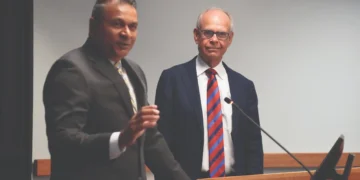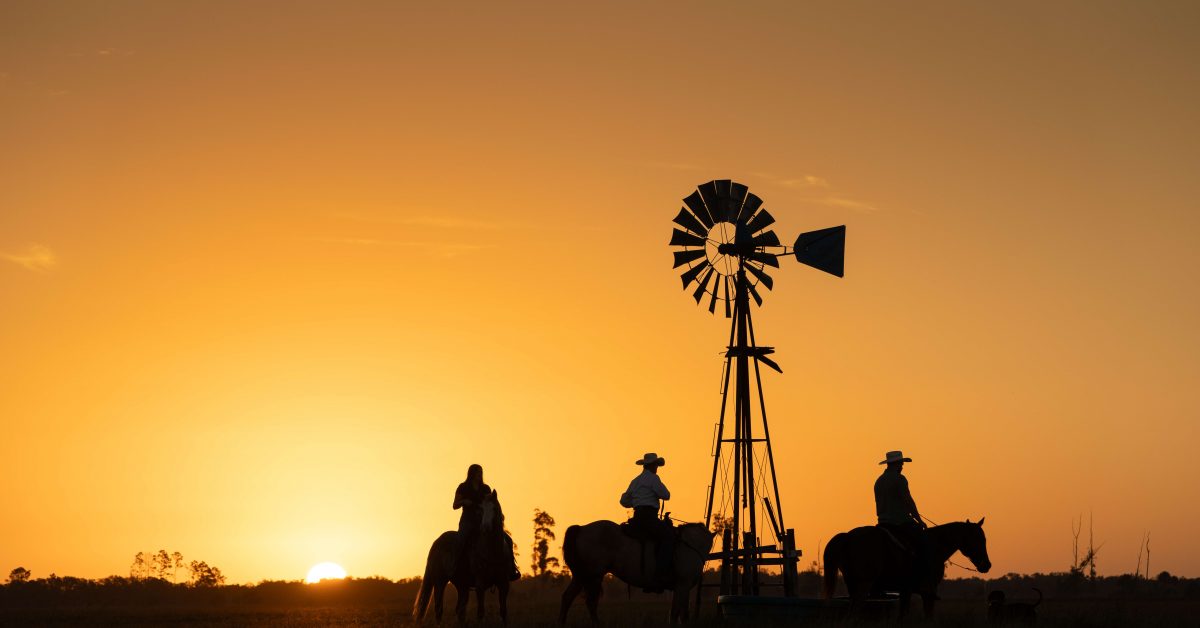It’s a Friday afternoon in July, 93 degrees, and the sky above Tiger Bay Ranch outside Arcadia is the color of old denim. Judge Don Hall is giving me a tour of the ranch in a Cam-Am Side-by-Side, but if I weren’t here, he’d most likely be on horseback. In addition to being a rancher, Hall is a circuit court judge for DeSoto County. On our tour, he’s wearing a white cowboy hat and dark Ray-Ban sunglasses, and he looks like the kind of man you wouldn’t want to tangle with, in or out of court.
Hall’s family has owned this ranch for 85 years. His children—both attorneys—are the fourth generation to work it, and they help run daily operations on it. Hall won’t tell me how many acres the ranch covers—“Asking how many acres a man owns is like asking how much money he’s got in the bank”—but he will tell me it’s a 2-by-6-mile parcel. “We know what we have and we’re lucky to have it,” Hall says.
The ranch hasn’t changed much in the last 200 years. It’s a mix of pine flatwoods and open prairie with native grasses, stands of cabbage palms and clumps of saw palmetto. Here and there, live oaks are draped with Spanish moss. It’s what naturalists call a dry upland system, once perfect for raising cattle but now more valuable as the future site of tract homes. It’s the kind of land that developers are desperate to get their hands on.
But thanks to the state’s conservation easement program, this land won’t be developed. The Hall family agreed to enter into a conservation easement with the state of Florida on a portion of the ranch. As part of the deal, the family gets to keep its land and maintain it as a working ranch. And in exchange, Tiger Bay will never become the kind of suburban sprawl that’s eating this state. “We’re not anti-development by any means,” Hall says. “We’re just making sure there’s a balance.”
Conservation easements are a good deal for the state of Florida. They help maximize the state’s conservation footprint while keeping the maintenance costs with the landowners. At Tiger Bay, the Halls do a controlled burn every two to three years on rotation. They partner with agencies to protect Florida’s natural resources and water quality. After Hurricane Ian in 2022, they continue to restore the property. “If the state owned this land outright, taxpayers would have to pay for all of that,” Hall says. “This is a win-win for everybody.”
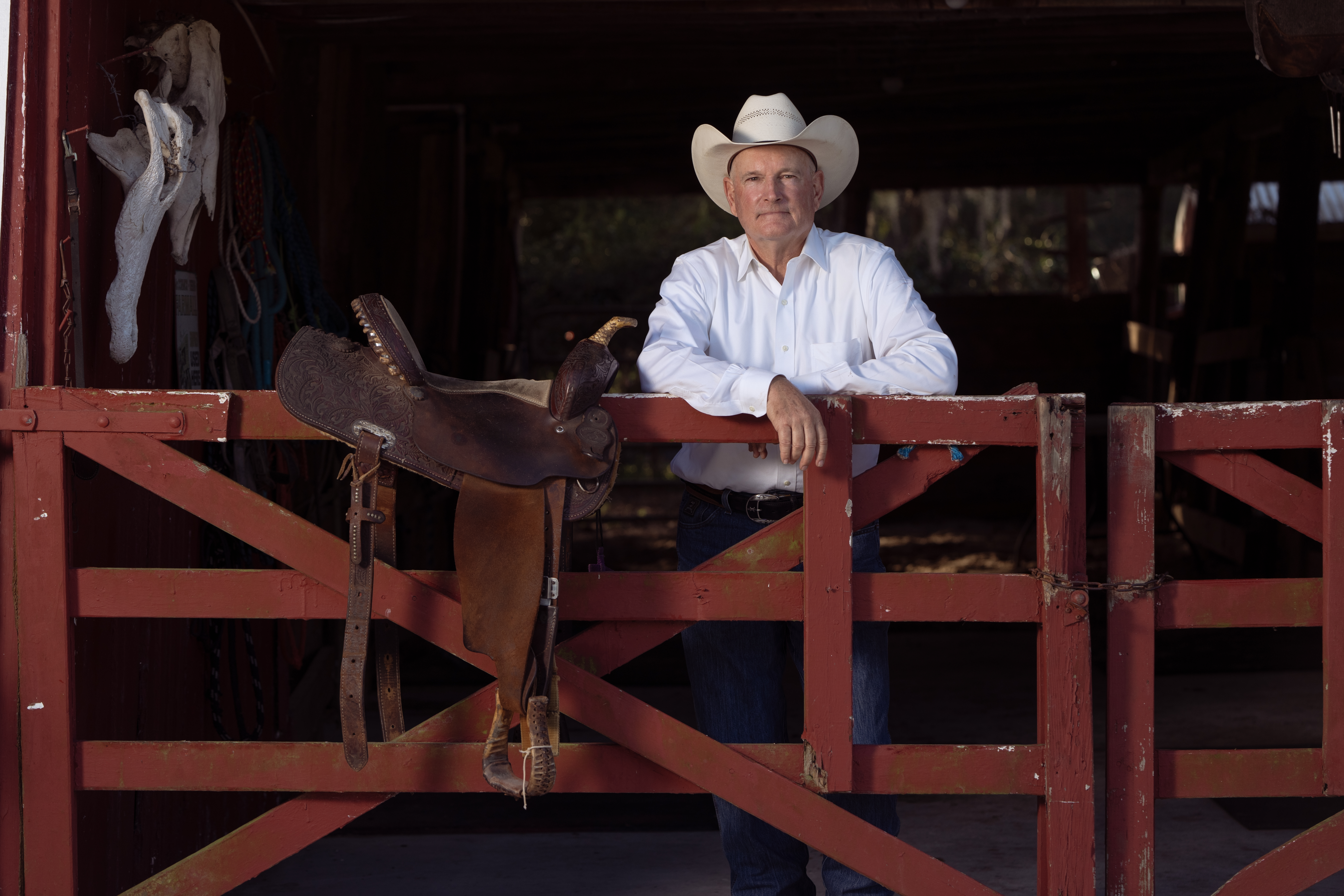 In 1984, when Dean Saunders was 23 years old, Lawton Chiles—then in the U.S. Senate—hired him to serve as his agricultural liaison to farmers and ranchers. Saunders was an eighth generation Floridian with a degree in citrus management from the University of Florida and his own family background in agriculture. During one of his long drives through the middle of the state, he looked out the car window at rows of orange trees as far as the eye could see. And he had the sudden thought: One day this will all be houses, and I’m going to hate that.
In 1984, when Dean Saunders was 23 years old, Lawton Chiles—then in the U.S. Senate—hired him to serve as his agricultural liaison to farmers and ranchers. Saunders was an eighth generation Floridian with a degree in citrus management from the University of Florida and his own family background in agriculture. During one of his long drives through the middle of the state, he looked out the car window at rows of orange trees as far as the eye could see. And he had the sudden thought: One day this will all be houses, and I’m going to hate that.
That’s when Saunders started to wonder if there was a way to pay landowners not to develop their land. “I had this crazy idea,” Saunders says. “I felt like we didn’t need to buy everything. We could protect the land by buying the development rights. The property would stay in the hands of private landowners, and that way the state wouldn’t have to pay to manage it, so the dollars would go further.”
In 1992, Saunders was elected to the Florida Legislature, where he set about making his crazy idea a reality. He encouraged legislation to buy the development rights to land around the Green Swamp area in the middle of the state to test if the government and landowners could work together in the interests of conservation. The project was so successful that he decided to take it statewide.
After serving four years in Tallahassee, Saunders left the Legislature for personal reasons and decided to go back to what he knew best: real estate. He specialized in conservation easements, and he’s spent the last two decades on his personal mission of conserving land for future generations in a way that makes financial sense for landowners and taxpayers. In May, he helped broker a deal with the state of Florida for $97 million that would protect 38,848 acres of ranchland from development. Saunders brokered 18,427 of those acres for approximately $45 million.
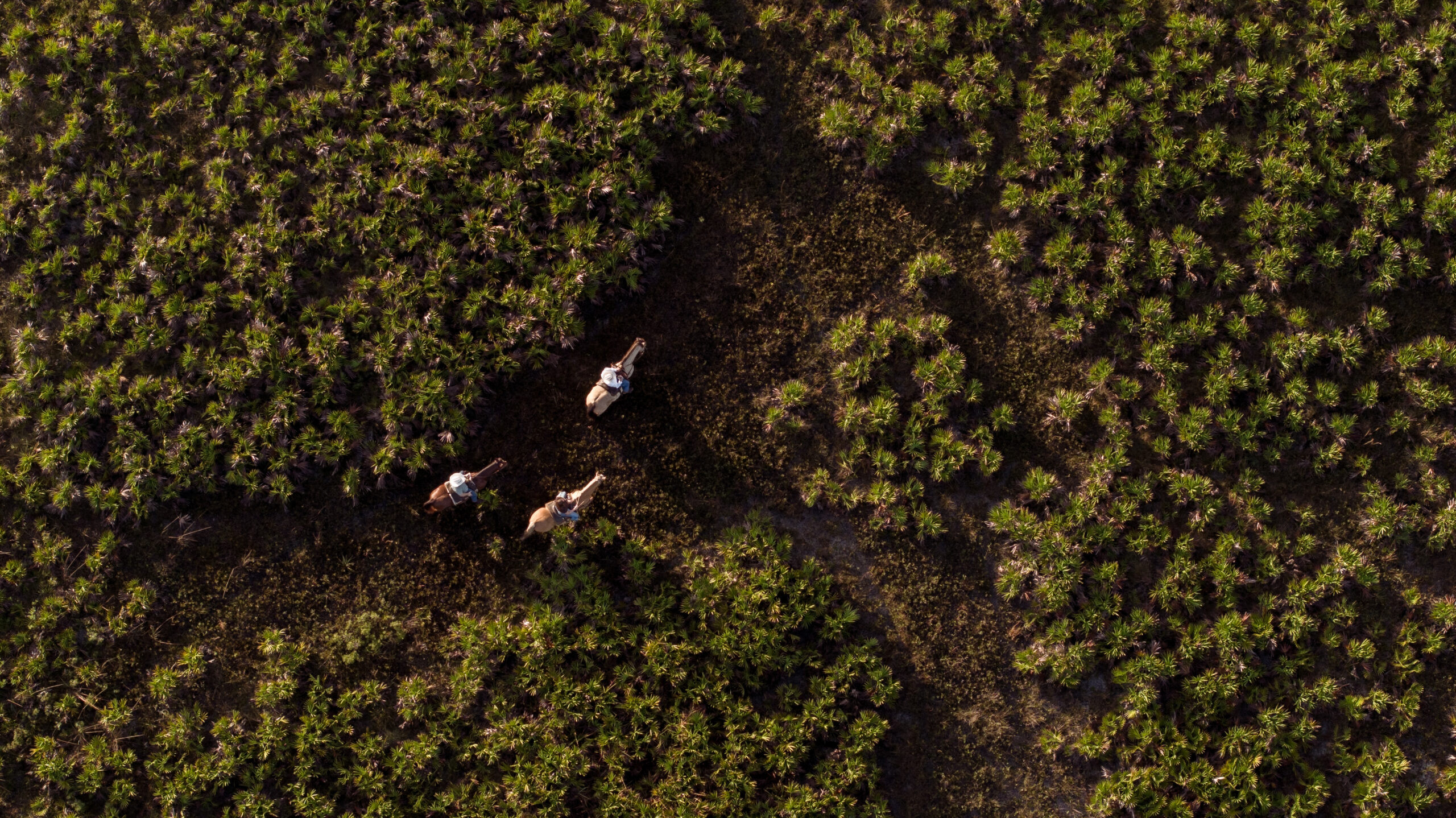
“Ecologically speaking, other than pristine natural lands, ranchlands are the most important lands in the southern Florida ecosystem,” says Julie Morris, director of the Florida Conservation Group, a Manatee County-based nonprofit that guides ranchers through the process of private land conservation, especially conservation easements. “Ranches most closely mimic the vast grassland savanna that historically covered the southern peninsula. If we want to conserve species like the Florida panther, the Florida black bear and the Florida grasshopper sparrow, those species all live on ranchlands.”
In a perfect world, the state would simply buy more conservation lands outright. But the limiting factor is money: There’s never enough of it. In order for Florida to achieve its conservation goals—including preserving habitats where endangered species live—it needs a mix of both public and private lands. That’s where conservation easements come in.
According to Morris, there’s no shortage of landowners willing to sell the development rights to their land. “If we had a billion dollars, we could spend it and then some,” she says. “What we need is funding.”
And that funding—finally—is on the way. In June 2023, Gov. Ron DeSantis approved $850 million for the Florida Wildlife Corridor, a program started in 2021 to preserve millions of acres of wildlife habitat, including ranchlands. A large part of that money is earmarked for Collier County. He also dedicated $100 million in recurring funding to Florida Forever, the state’s conservation land program and one of the largest public land acquisition projects in the country. And in September, the governor and cabinet approved another $141 million for the protection of properties within the Florida Wildlife Corridor through the Florida Forever and Rural and Family Lands Protection programs. These projects will expand the corridor by more than 42,000 acres. Seventeen thousand of those acres border Big Cypress National Preserve and are crucial for Everglades restoration.
This has Morris hopeful for the future of land preservation across the state. “Conservation easements are an excellent mechanism to conserve our wildlife and water resources in a cost-effective way,” she says.
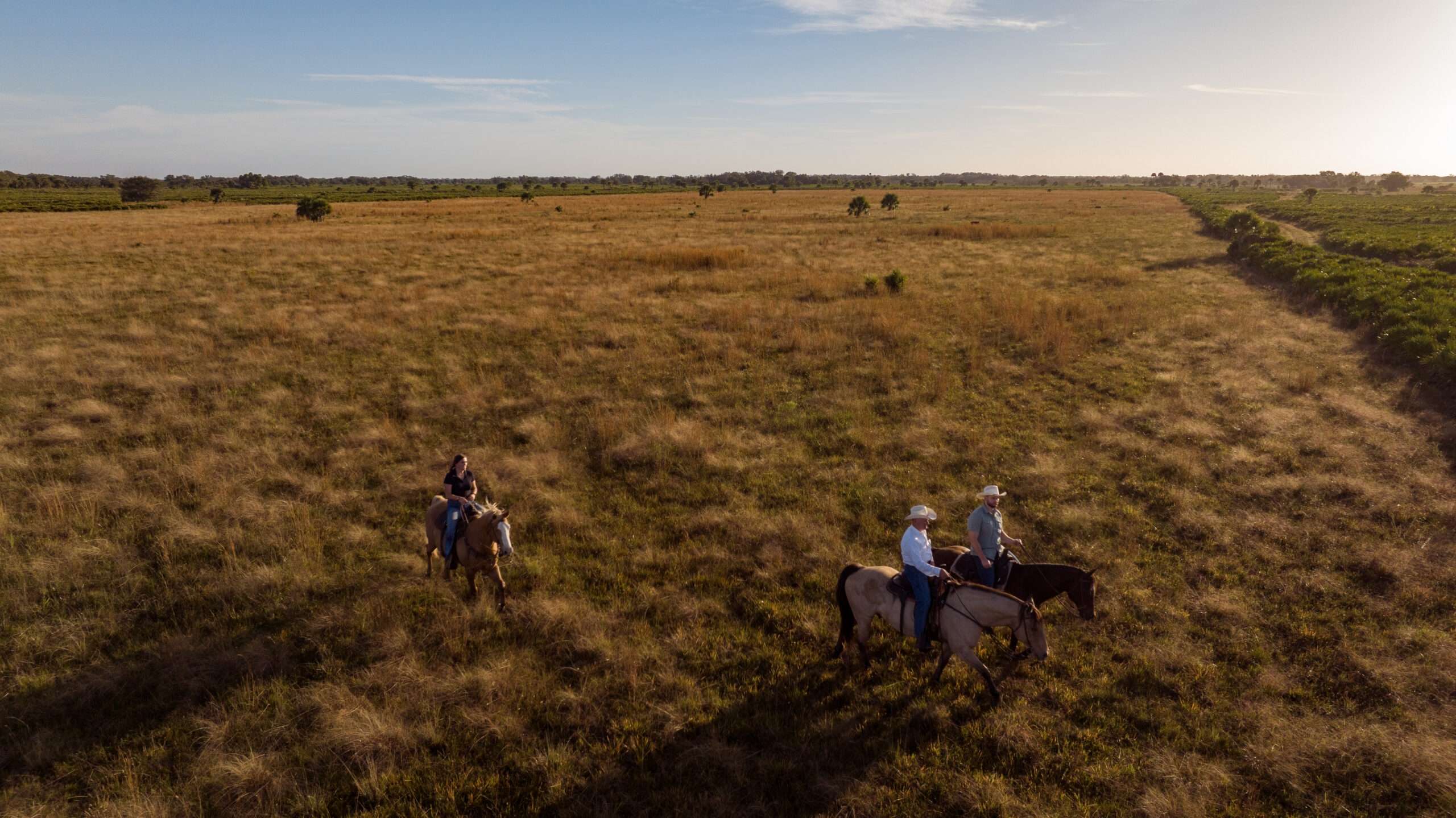
But will it be enough?
In Lee and Collier counties, undeveloped land is being transformed at a breakneck pace. Some notable projects include:
The Kingston development, a 6,000-acre project off Corkscrew Road, will include 10,000 dwelling units, 240 hotel units and 700,000 square feet of commercial space. The acreage was once farmland, and it borders critical conservation areas, such as the Corkscrew Regional Ecosystem Watershed, or CREW, and the Imperial Marsh Preserve.
The Florida Farms Development Project on the south side of Corkscrew Road will transform 5,208 acres of agricultural fields, upland and wetland habitat into 5,208 residential units, 100,000 square feet of commercial space and 240,000 square feet of amenity area.
Construction is scheduled to begin this year on Rivergrass Village, the billion-dollar development from Collier Enterprises off Oil Well Road, east of Golden Gate Estates. The project will cover 1,000 acres of former farmland.
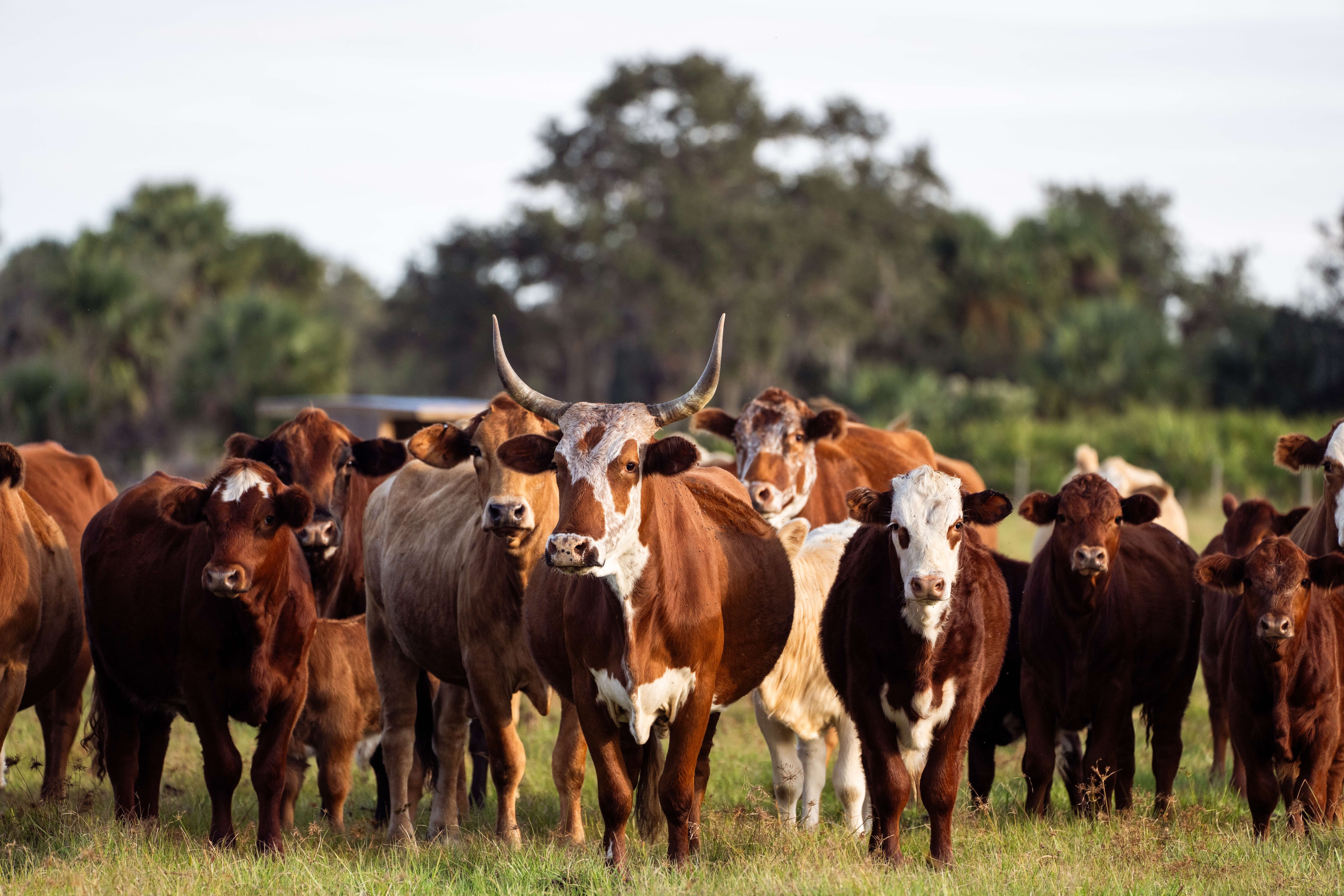 Bellmar Village, also from Collier Enterprises, is set to add 2,750 homes on 1,000 acres to eastern Collier County starting in 2024. The first homes should be ready by 2025. The development will go up on rural lands that serve as prime Florida panther habitat.
Bellmar Village, also from Collier Enterprises, is set to add 2,750 homes on 1,000 acres to eastern Collier County starting in 2024. The first homes should be ready by 2025. The development will go up on rural lands that serve as prime Florida panther habitat.
Forty acres of undeveloped land in Lehigh Acres was sold for $4 million in May 2023. The deal was brokered by Justin Thibaut and Randy Thibaut of LSI Companies, a Southwest Florida-based real estate and development firm. The Lehigh property is slated for residential development.
Fifty acres of residential land in North Fort Myers also was sold in May by Justin Thibaut and Randy Thibaut of LSI Companies.
“It’s a lot under development,” says Rob Moher, president and CEO of the Conservancy of Southwest Florida. “There are 14 to 18 large-scale projects in eastern Lee and Collier counties that are either filing for permits, starting construction or in the process of being built. About 32,000 new homes are being considered for development. This area is not equipped for that kind of growth. It’s an unsustainable path of development.”
As construction continues to push eastward, eating up the rural lands in its path, Southwest Florida runs the risk of becoming another version of Florida’s east coast—a vast, uninterrupted sprawl of strip malls and gated communities.
“We‘re all going to feel the effects of that,” Moher says, “as we lose the reason people moved here in the first place.”
